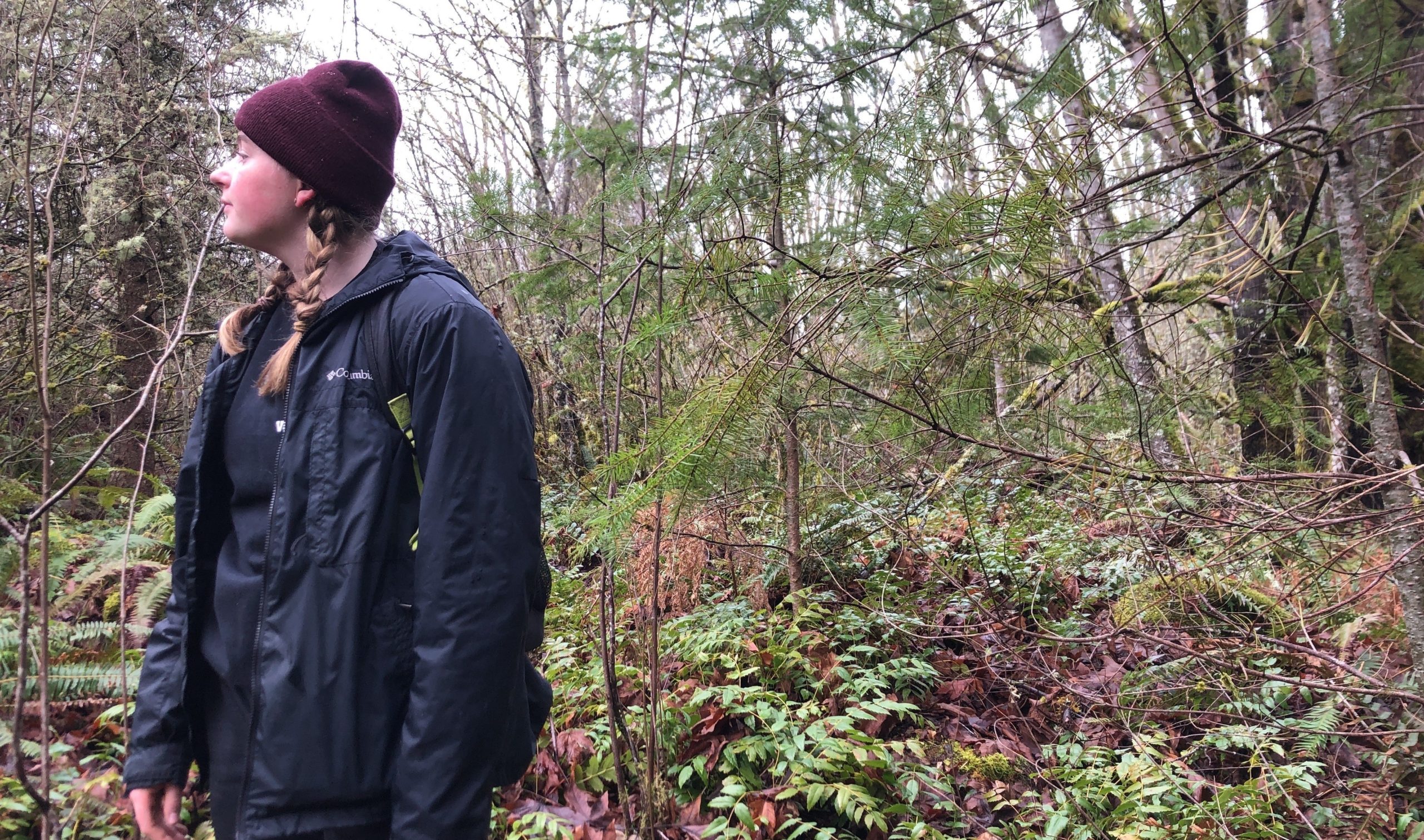 My name is Jaelynn, and I was honored to be able to go out with the Nisqually Land Trust to job shadow Courtney and Ian in a day of work in the field. I am a running start student at South Puget Sound Community College and am currently enrolled in an environmental science class. For our final projects we either got the choice of drafting a paper or job shadowing someone in the field. I have learned so many interesting and important things about biodiversity and the importance of upholding habitats in this class that I wanted to see how certain organizations were applying what I learned about, in their everyday jobs.
My name is Jaelynn, and I was honored to be able to go out with the Nisqually Land Trust to job shadow Courtney and Ian in a day of work in the field. I am a running start student at South Puget Sound Community College and am currently enrolled in an environmental science class. For our final projects we either got the choice of drafting a paper or job shadowing someone in the field. I have learned so many interesting and important things about biodiversity and the importance of upholding habitats in this class that I wanted to see how certain organizations were applying what I learned about, in their everyday jobs.

At first, I had no idea what to expect and was a little nervous going out into the field with no experience and only the knowledge I learned in class. However, all my worries disappeared as I met up with Courtney and Ian and they explained how our day would go and all the things we would be completing. They were so passionate about their jobs and made sure to explain everything to me and often urged me to ask more questions.

Our day consisted of hiking through the woods and monitoring new and invasive species in the surrounding area. Hiking under the large, outstretched canopy of Big Cedar and Western hemlock was super peaceful and a wonderful way to interact with wildlife and monitor the species growing there. It was honestly super awesome walking through the brush and then coming to a wide opening at the Nisqually River and just being surrounded by the sound of its flowing current and the nearby chirping birds. I have always loved hiking and exploring new locations in nature but have not been taught many of the ways we can help wildlife and create sustainable habitats. I gained a lot of knowledge of the natural habitats and species of plants that live there and what jobs they perform in the ecosystem.

On top of this, I got the opportunity to help stake down tree tubes around freshly planted trees. Before coming on this job shadow, I had no idea what the tree tube’s purpose was or how beneficial they are to help the plants grow without interference from weather or other animals. Attaching the tubes was work, but so rewarding as we are helping the environment develop healthily and reduce CO2 emissions. Most importantly I learned the greater impact we have as humans on our surrounding area and how important it is to keep it intact to effectively use resources and give back to the environment that provides us with so much.






 by Susannah Prenoveau | July 19, 2021
by Susannah Prenoveau | July 19, 2021

 by Susannah Prenoveau | June 7, 2021
by Susannah Prenoveau | June 7, 2021



 By Susannah Prenoveau, Washington Service Corps AmeriCorps Member – Nisqually Land Trust Volunteer Coordinator | December 2020
By Susannah Prenoveau, Washington Service Corps AmeriCorps Member – Nisqually Land Trust Volunteer Coordinator | December 2020
 by Courtney Murphy | December 2020
by Courtney Murphy | December 2020


 by Susannah Prenoveau | December 2020
by Susannah Prenoveau | December 2020